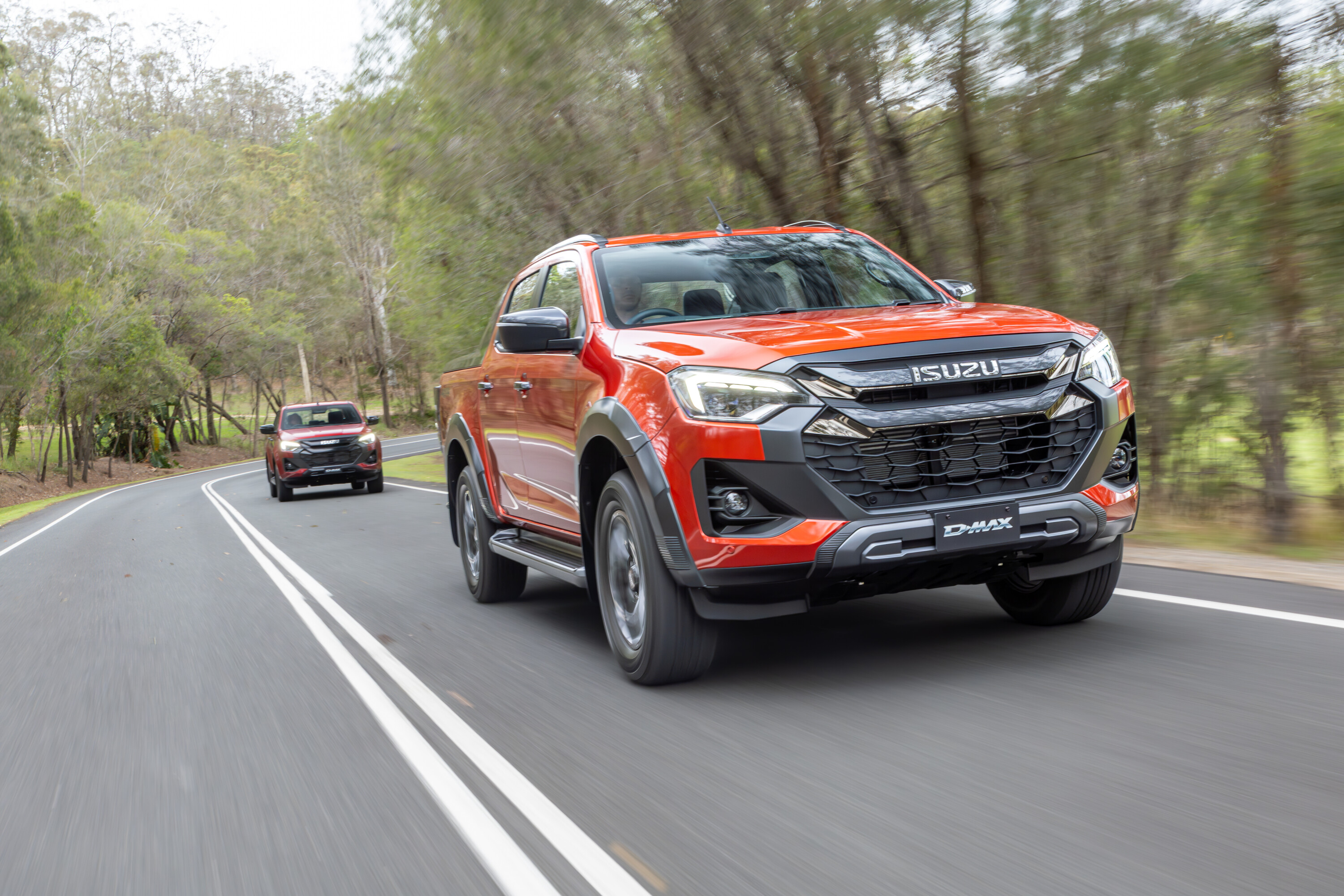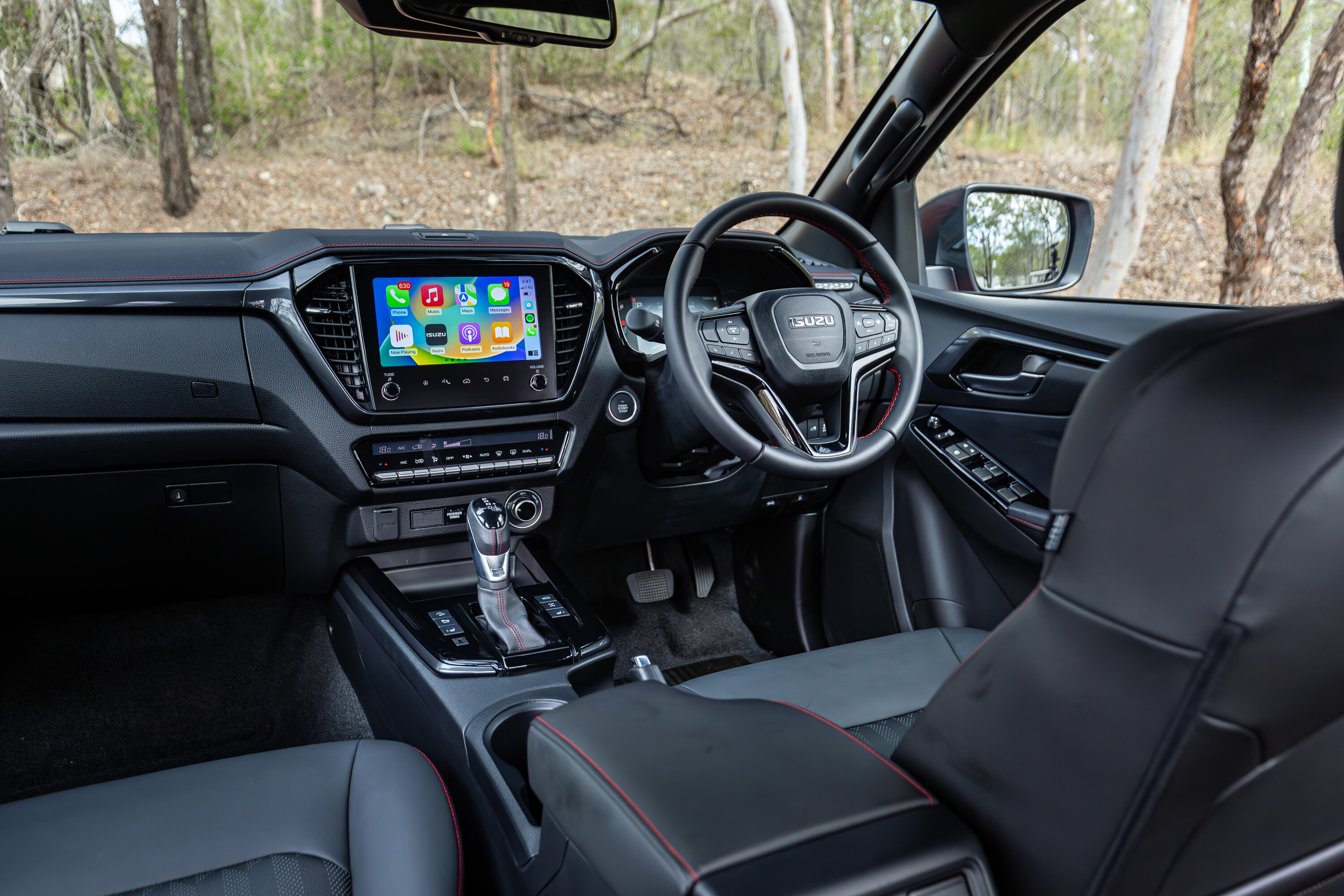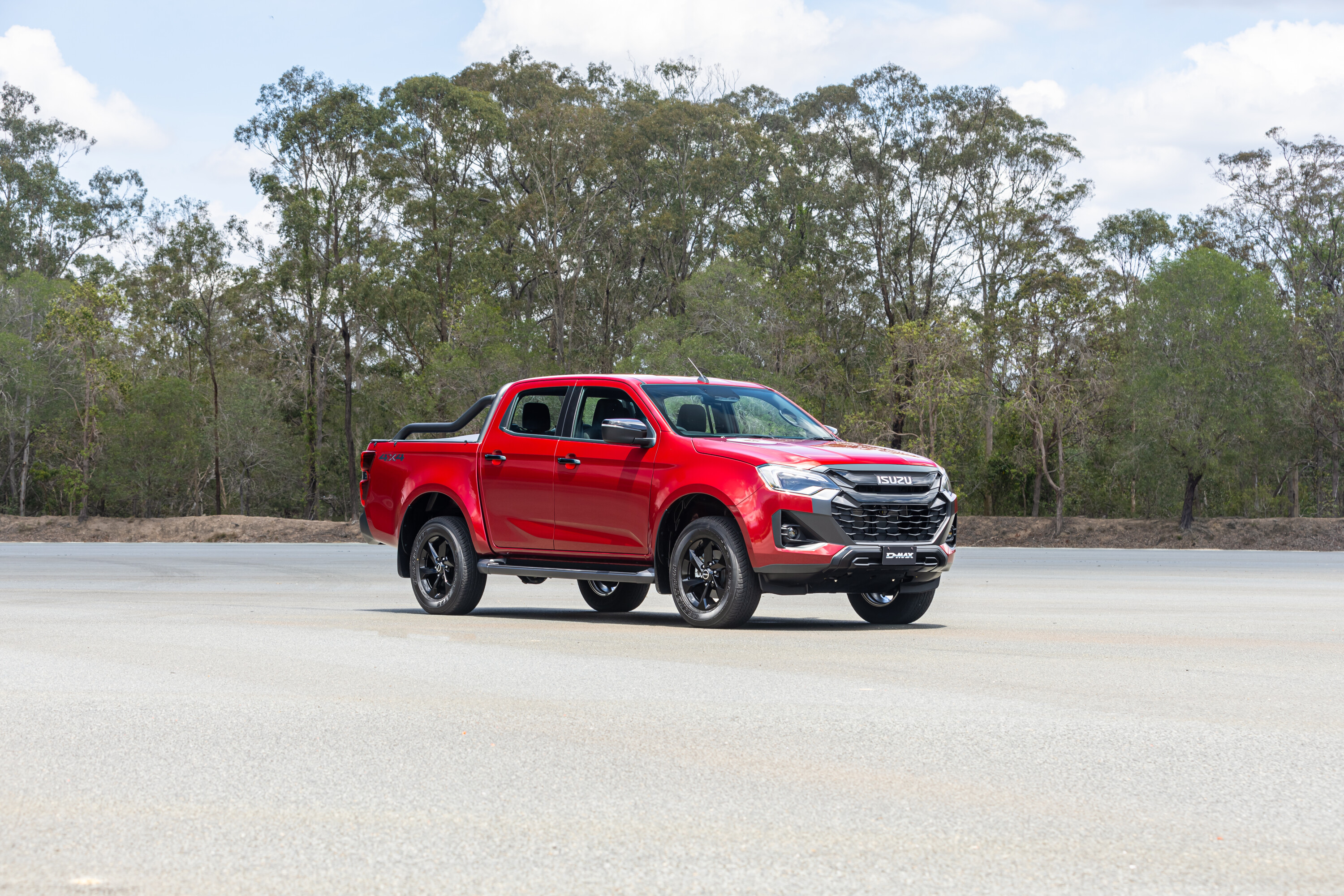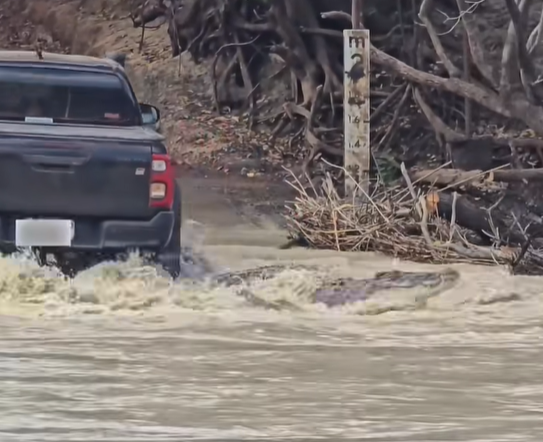When it was introduced in 2020, this latest generation of D-MAX led the mid-size ute category with an unrivalled suite of safety features; but with new models coming out since and other competitors upgrading their utes, the pack has caught up.
Isuzu has now updated and refined its package to stay at the forefront and continue the strong sales it has enjoyed from the ute segment. Not only was the D-MAX the third best-selling ute in Australia in 2023 but it was the country’s third best-selling car overall, behind the Ford Ranger and Toyota HiLux.
Model range
The 2024 D-MAX range comprises 26 variants consisting of single-cab, extra-cab and double-cab passenger compartments; cab-chassis and styleside bodies; 4×2 and 4×4 drivelines; and the choice of 1.9- and 3.0-litre diesel engines. There’s a D-MAX to suit everyone, from the lollipop-spec 2WD SX cab-chassis to the top-of-the-range X-Terrain.
The new kid on the block is the X-Rider, which only comes as a double-cab tub 4×4 with the 3.0L engine and automatic transmission for $59,500 (plus ORC). The D-MAX X-Rider brings the blacked-out looks of the higher-spec utes that all the cool kids have, to a more basic truck with the smaller eight-inch infotainment screen, cloth interior trim and vinyl floor coverings. It’s the ute to get if you want that look without all the extras and expense of the X-Terrain model.

New look
While the bones of the D-MAX remain the same, Isuzu has freshened the styling with a new grille, headlights and front-end treatment. Different trim colours and designs of the alloy wheels differentiate the many model specifications, but the overall vibe remains distinctly Isuzu.

Improved safety
While we applauded Isuzu for fitting such a comprehensive suite of so-called driver aids and safety features in its ute back in 2020, the refinement and calibration of some of the systems left a lot to be desired. Over-aggressive lane keeping, annoying beeps and buzzers, and frustrating lane cantering were just some of the systems that detracted from the driving experience and only made you wish it would all end as soon as possible.
To its credit, Isuzu listened to those criticisms and addressed them with more than a simple recalibration, by introducing all-new hardware to give better results. Key to that hardware is the new forward-facing 3D stereo camera that scans and reads the road ahead to assist with lane-centring or to warn the driver of obstacles.

Isuzu says it can do this with greater accuracy than the previous system thanks to wider peripheral vision and depth perception. The camera’s field of view increases from 40° to 120°. Vehicle detection range also increases from 120m to 150m, with the system able to identify the headlights of oncoming vehicles that are 700m away.
The full range of ADAS and safety across the D-MAX range now includes:
| Eight airbags (dual front, dual seat side, dual full-length curtain, front knee and centre) |
| AEB with Turn Assist |
| Forward Collision Warning |
| Updated Adaptive Cruise Control |
| Speed Limiter |
| Mis-acceleration Mitigation |
| Driver Attention Assist |
| Traffic Sign Recognition |
| Lane Departure Warning |
| Lane Departure Prevention |
| Updated Lane Keeping Assist |
| Emergency Lane Keeping |
| Blind Spot Monitoringu00a0 |
| Rear Cross Traffic Alertu00a0 |
| Trailer Sway Control |
| Updated Adaptive Cruise Control |
| Rear Cross Traffic Brake |
| Digital reversing camera |
Isuzu does offer a tyre pressure monitoring system on the D-MAX, but not on all models. That’s a shame, as it’s a major exclusion on an otherwise comprehensive safety package. That and the new TPMS is a good one with a feature we haven’t seen before, where, when you are inflating the tyres and the tyre reaches the placard recommended pressure, the car beeps and the lights flash to let you know. Clever stuff. The TPMS also provides readouts and warnings of tyre temperatures.
Powertrains
The comprehensive D-MAX range continues with a choice of 4×4 and 4×2 drive lines; manual and automatic transmissions; and the 110kW/350Nm 1.9-litre or 140kW/450Nm 3.0-litre diesel engines. The 1.9 is only available in select models, with the popular 4JJ 3.0L being the popular choice for those who like to tow and load up their utes.
The 4×4 models now benefit from a Rough Terrain button that changes the calibration of the electronic traction control (ETC) for better response when driving off-road. This is a feature that has been adapted from the MU-X wagon. It also keeps the ETC active across the front axle when the rear differential lock is engaged, making it a handy function and a nice addition from the MU-X.
The new X-Rider is based on the mid-range LS-M specification. Over the LS-M it gets a soft tonneau and sports bar, with black accents. The interior also gets the black-out treatment with black accents and black roof lining, while maintaining its working-class roots with cloth seats, vinyl floor coverings, the new eight-inch infotainment system, and a 4.2-inch Multi-Information Display. Models above the X-Rider get a new nine-inch infotainment screen and a more comprehensive seven-inch multi-information gauge display.
Overall
The changes made to the D-MAX range refine what has always been a great package, and Isuzu has addressed some of the complaints we’ve had of the electronic driver aids in the past. It’s a solid mid-life upgrade for the line-up that comes at the perfect time following the recent introduction of an all-new Mitsubishi Triton that aims to challenge the D-MAX for that third place behind Ranger and HiLux. Mitsubishi had a lock on that third place for years and you can bet they will fight to get it back.
Looking further ahead, the 2025 Kia Tasman will also be looking to step squarely into the Isuzu’s terrain and, all of a sudden, the D-MAX will become one of the older vehicles in the segment. For now, these latest upgrades will keep the D-MAX a popular choice with families, tradies and adventurers.

2024 Isuzu D-MAX pricing
| Variant | RRP (before on-road costs) |
|---|---|
| SX Single Cab Chassis 1.9L Manual 4×2 | $32,700 ($32,490 drive away) |
| SX Single Cab Chassis 1.9L Automatic 4×2 | $34,700 |
| SX Single Cab Chassis 3.0L Manual 4×2 | $34,700 |
| SX Single Cab Chassis 3.0L Automatic 4×2 | $36,700 |
| SX Space Cab Chassis 3.0L Automatic 4×2 | $40,200 |
| SX Crew Cab Chassis 1.9L Automatic 4×2 | $41,200 |
| SX Crew Cab Chassis 3.0L Automatic 4×2 | $43,200 |
| SX Crew Cab Ute 1.9L Automatic 4×2 | $42,700 |
| SX Crew Cab Ute 3.0L Automatic 4×2 | $44,700 |
| LS-U Crew Cab Ute 3.0L Automatic 4×2 | $54,500 |
| SX Single Cab Chassis 3.0L Manual 4×4 | $42,700 |
| SX Single Cab Chassis 3.0L Automatic 4×4 | $44,700 |
| SX Space Cab Chassis 3.0L Automatic 4×4 | $48,200 |
| SX Crew Cab Chassis 3.0L Manual 4×4 | $49,200 |
| SX Crew Cab Chassis 3.0L Automatic 4×4 | $51,200 |
| LS-M Crew Cab Chassis 3.0L Automatic 4×4 | $54,300 |
| LS-U Crew Cab Chassis 3.0L Automatic 4x4u00a0 | $61,000 |
| SX Crew Cab Ute 1.9L Automatic 4×4 | $50,700 |
| SX Crew Cab Ute 3.0L Automatic 4×4 | $52,700 |
| LS-M Crew Cab Ute 3.0L Automatic 4×4 | $55,800 |
| X-RIDER Crew Cab Ute 3.0L Automatic 4×4 | $59,500u00a0 |
| LS-U Space Cab Ute 3.0L Automatic 4×4 | $59,500 |
| LS-U Crew Cab Ute 3.0L Automatic 4×4 | $62,500 |
| LS-U+ Crew Cab Ute 3.0L Automatic 4×4 | $65,500 |
| X-TERRAIN Crew Cab Ute 3.0L Automatic 4×4 | $70,500 ($67,990 drive away) |






